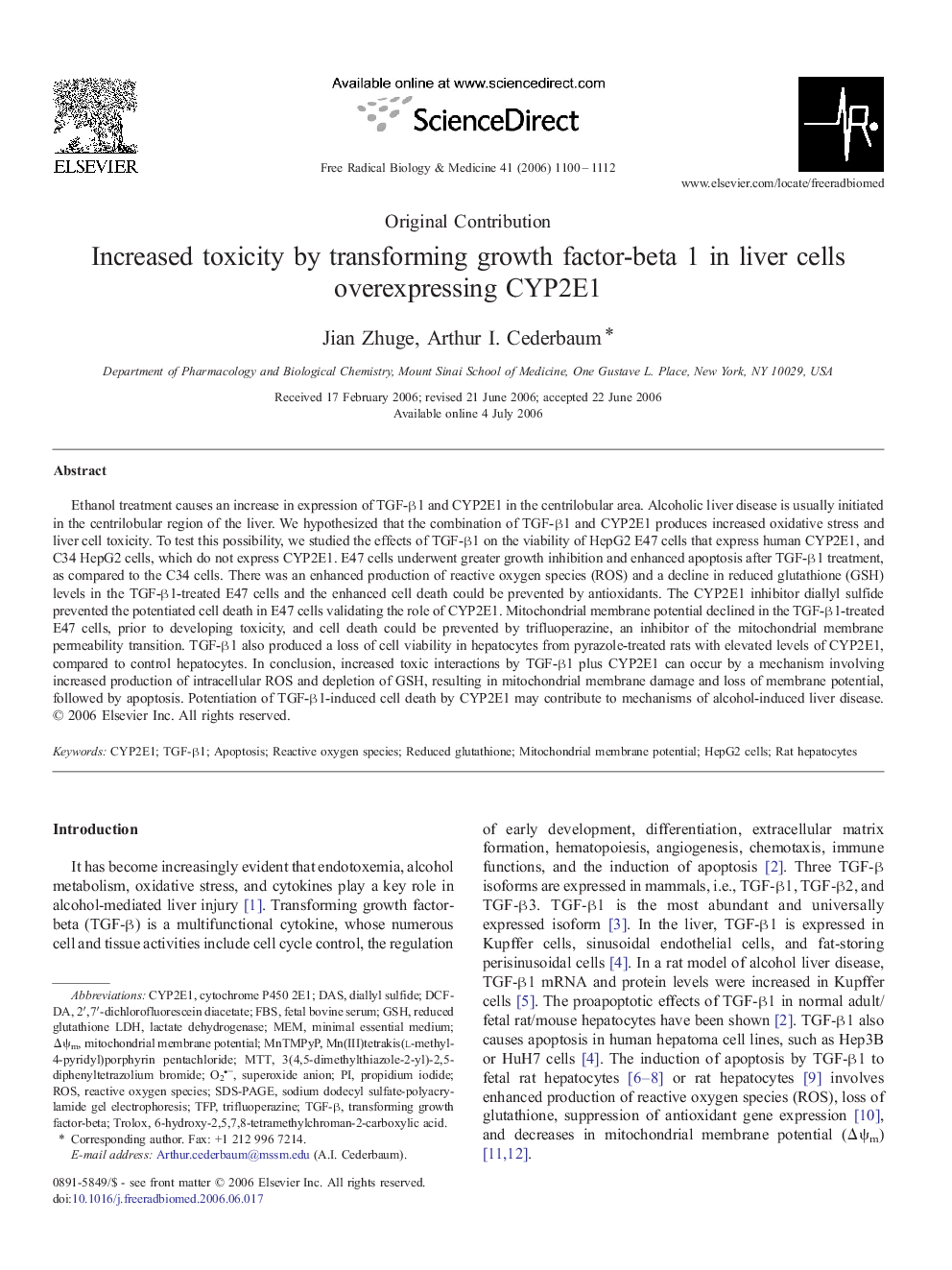| Article ID | Journal | Published Year | Pages | File Type |
|---|---|---|---|---|
| 1911994 | Free Radical Biology and Medicine | 2006 | 13 Pages |
Ethanol treatment causes an increase in expression of TGF-β1 and CYP2E1 in the centrilobular area. Alcoholic liver disease is usually initiated in the centrilobular region of the liver. We hypothesized that the combination of TGF-β1 and CYP2E1 produces increased oxidative stress and liver cell toxicity. To test this possibility, we studied the effects of TGF-β1 on the viability of HepG2 E47 cells that express human CYP2E1, and C34 HepG2 cells, which do not express CYP2E1. E47 cells underwent greater growth inhibition and enhanced apoptosis after TGF-β1 treatment, as compared to the C34 cells. There was an enhanced production of reactive oxygen species (ROS) and a decline in reduced glutathione (GSH) levels in the TGF-β1-treated E47 cells and the enhanced cell death could be prevented by antioxidants. The CYP2E1 inhibitor diallyl sulfide prevented the potentiated cell death in E47 cells validating the role of CYP2E1. Mitochondrial membrane potential declined in the TGF-β1-treated E47 cells, prior to developing toxicity, and cell death could be prevented by trifluoperazine, an inhibitor of the mitochondrial membrane permeability transition. TGF-β1 also produced a loss of cell viability in hepatocytes from pyrazole-treated rats with elevated levels of CYP2E1, compared to control hepatocytes. In conclusion, increased toxic interactions by TGF-β1 plus CYP2E1 can occur by a mechanism involving increased production of intracellular ROS and depletion of GSH, resulting in mitochondrial membrane damage and loss of membrane potential, followed by apoptosis. Potentiation of TGF-β1-induced cell death by CYP2E1 may contribute to mechanisms of alcohol-induced liver disease.
